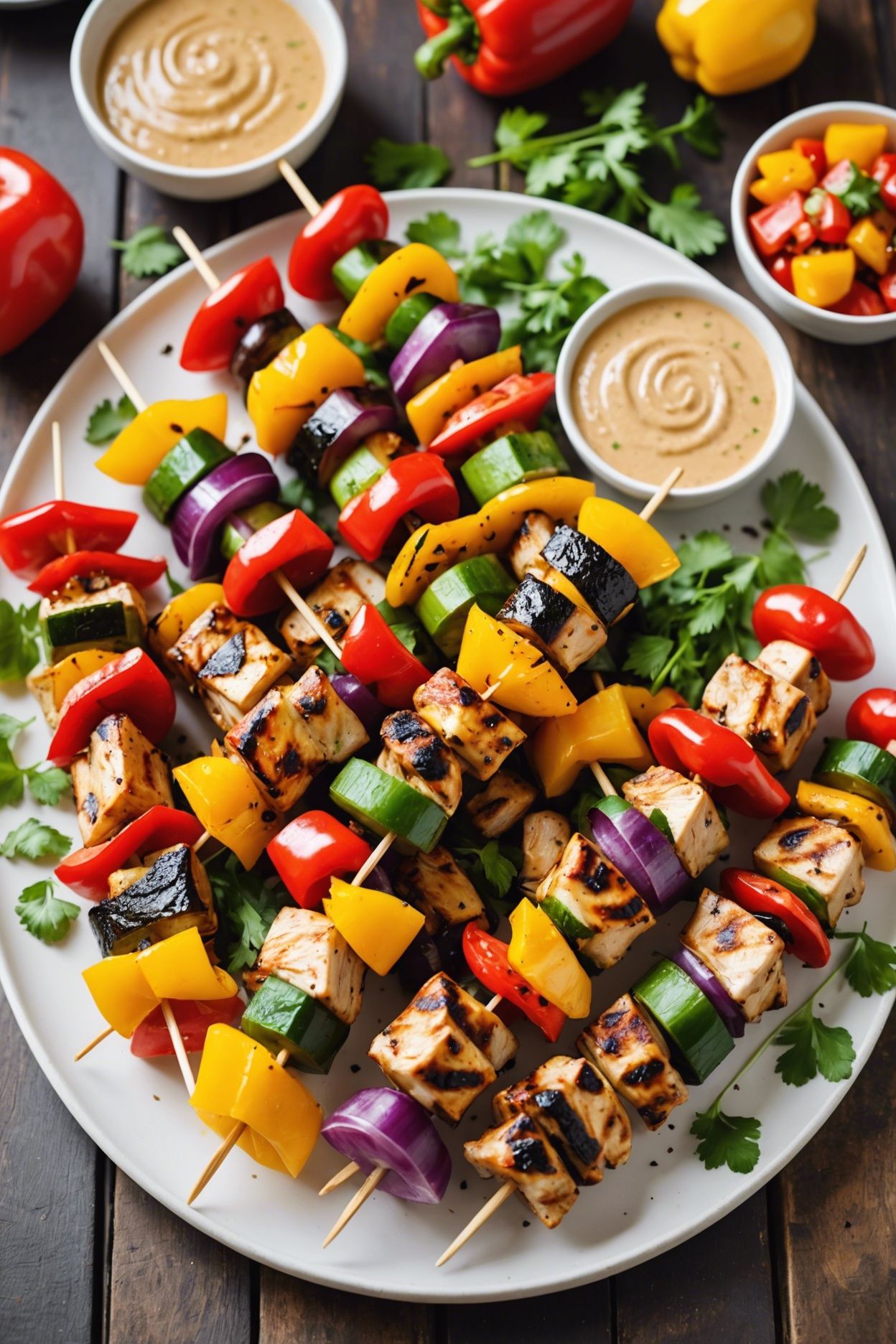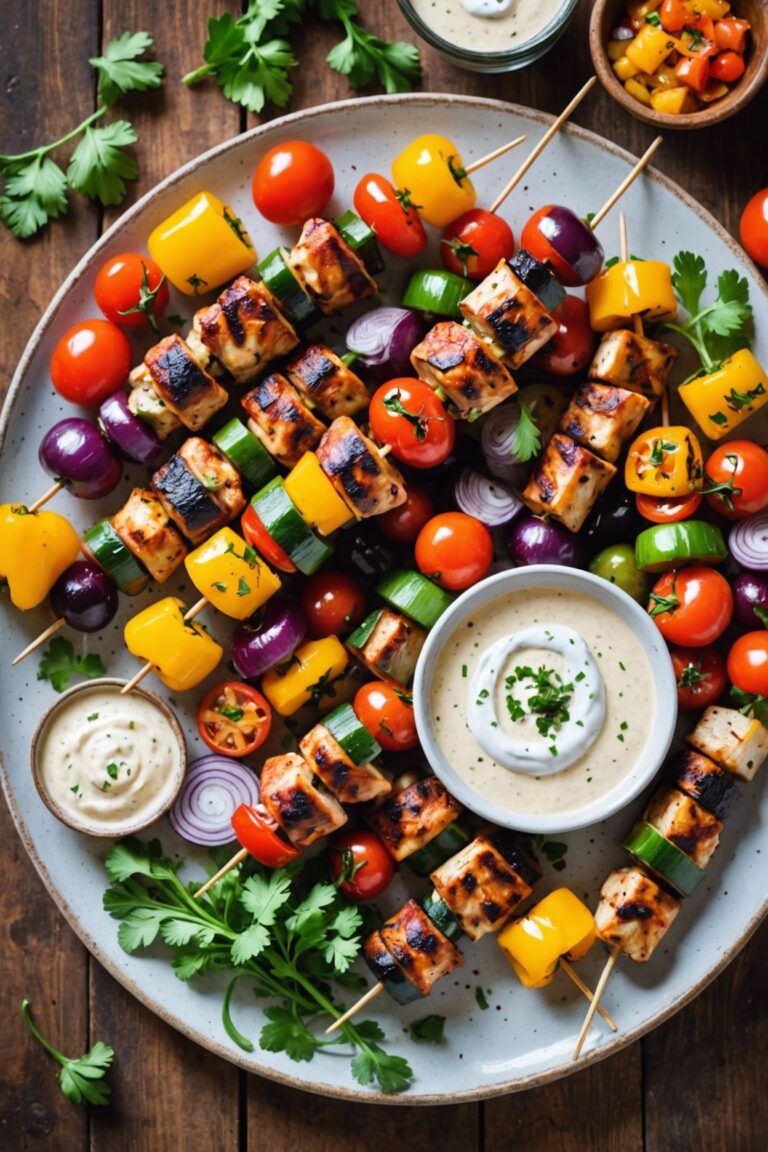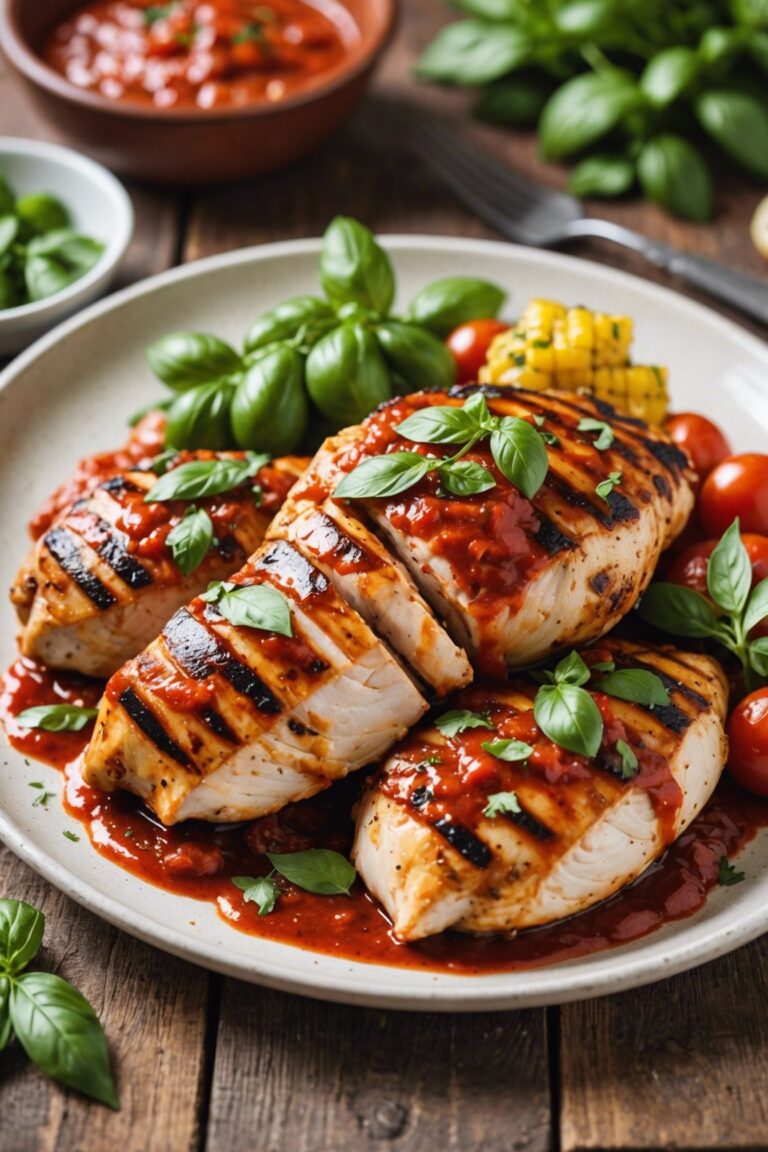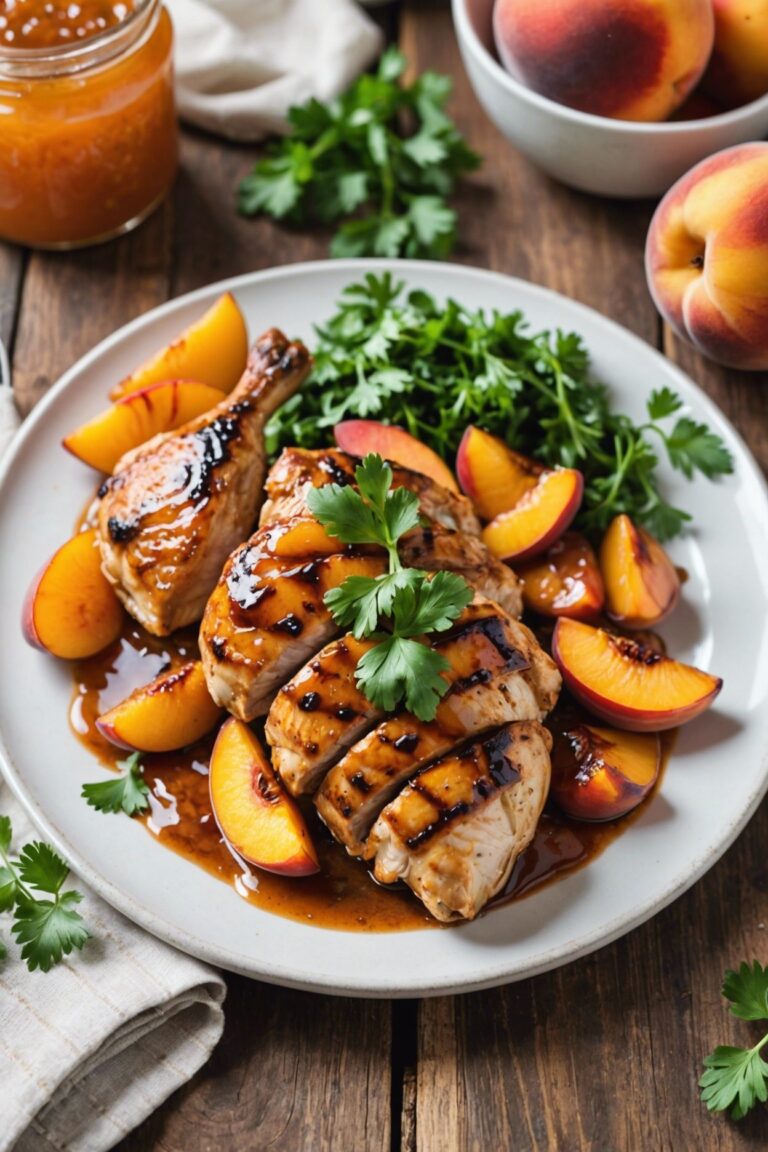My New Cookbook is Out! Check Out Now!
Lime Ginger Chicken Kabobs With Peanut Sauce
Lime Ginger Chicken Kabobs With Peanut Sauce is a flavorful and colorful summer treat.
This Asian-inspired recipe combines the brightness of lime and ginger with the richness of peanut sauce, all wrapped up on a stick with juicy chicken and crunchy veggies.
Perfect for a warm-weather dinner party or casual gathering.
Ready Time
45 mins
Yields
4 servings
Ingredients
- 1 pound boneless, skinless chicken breast or tenders, cut into 1-inch pieces
- 1/2 cup plain Greek yogurt
- 2 tablespoons freshly grated ginger
- 1 tablespoon honey
- 1 tablespoon soy sauce
- 1 tablespoon rice vinegar
- 1 teaspoon grated lime zest
- 2 tablespoons freshly squeezed lime juice
- 1/4 teaspoon red pepper flakes (optional)
- 1/4 teaspoon salt
- 1/4 teaspoon black pepper
- 1/4 cup peanut butter
- 1/4 cup coconut milk
- 2 tablespoons soy sauce
- 2 tablespoons honey
- 1 tablespoon freshly squeezed lime juice
- 1/4 teaspoon grated ginger
- 1/4 teaspoon garlic powder
- 20-25 bamboo skewers, soaked in water for at least 30 minutes
- 1 large red bell pepper, cut into 1-inch pieces
- 1 large yellow bell pepper, cut into 1-inch pieces
- 1 large onion, cut into 1-inch pieces
- 2 large zucchinis, cut into 1-inch slices
- Fresh cilantro leaves for garnish
Instructions
Thread 2-3 chicken pieces, 2-3 bell pepper pieces, 1-2 onion pieces, and 2-3 zucchini slices onto each bamboo skewer, leaving a small space between each piece. In a large bowl, whisk together Greek yogurt, grated ginger, honey, soy sauce, rice vinegar, lime zest, lime juice, red pepper flakes (if using), salt, and black pepper.
Add the chicken pieces to the bowl and toss to coat.
Cover the bowl with plastic wrap and refrigerate for at least 30 minutes or up to 2 hours. Preheat a grill or grill pan to medium-high heat.
Remove the chicken from the marinade, letting any excess liquid drip off.
Grill the kabobs for 8-10 minutes, turning occasionally, or until the chicken is cooked through. While the kabobs are cooking, prepare the peanut sauce.
In a blender or food processor, combine peanut butter, coconut milk, soy sauce, honey, lime juice, grated ginger, and garlic powder.
Blend until smooth. Once the kabobs are cooked, brush with peanut sauce and serve immediately.
Garnish with fresh cilantro leaves.
Notes
You can adjust the level of spiciness in the peanut sauce by adding more or less red pepper flakes. If using, be careful when handling the flakes as they can irritate skin and eyes.
For easier grilling, make sure to pat the chicken dry with paper towels before threading it onto the skewers.
To ensure the vegetables cook evenly, try to keep them roughly the same size and shape. You can also use other vegetables like cherry tomatoes, mushrooms, or pineapple if you prefer.
The marinade can be made ahead of time and stored in the fridge for up to a day.
Just give it a good stir before using. You can serve the leftover peanut sauce as a dip for veggies or crackers.
Just store it in an airtight container in the fridge for up to a week.
If you’re short on time, you can skip the marinade step and just brush the chicken with the yogurt mixture during the last minute of grilling.
Nutrional Value
- Calories: 420
- Protein: 38g
- Fat: 24g
- Saturated Fat: 8g
- Cholesterol: 60mg
- Carbohydrates: 24g
- Fiber: 4g
- Sugar: 16g
- Sodium: 450mg
- Potassium: 640mg
- Vitamin A: 20% of the Daily Value (DV)
- Vitamin C: 100% of the DV
- Calcium: 10% of the DV
- Iron: 20% of the DV









